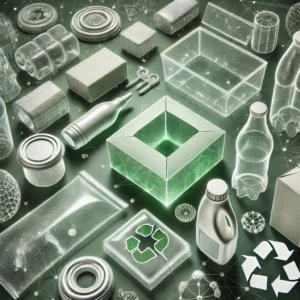Sustainable Packaging Solutions with 3D Printing

3D Printing in Packaging – Sustainable and Innovative Solutions
As sustainability takes center stage across industries, the packaging sector is witnessing a revolutionary shift with the integration of 3D printing technology. This innovative approach to packaging design not only reduces waste but also enhances efficiency and customization, making it a perfect fit for brands looking to embrace eco-friendly solutions. By using sustainable materials and on-demand manufacturing, 3D printing offers a forward-thinking path to packaging design.
How 3D Printing is Transforming the Packaging Industry
The flexibility and adaptability of 3D printing are unlocking new possibilities for packaging designs. Traditional packaging methods often involve bulk production, which can lead to excess materials and waste. On the other hand, 3D printing allows for precision manufacturing, which means creating only what is needed, minimizing waste and reducing carbon footprints.
Benefits of 3D Printing in Packaging
-
Sustainability 3D printing leverages biodegradable materials like PLA (Polylactic Acid), reducing reliance on plastics derived from fossil fuels. The capability to print only the required quantity of packaging also prevents unnecessary waste.
-
Customization and Personalization 3D printing allows for highly customizable designs, enabling brands to tailor their packaging to individual products and customer preferences. This ability enhances the consumer experience and differentiates brands in a competitive marketplace.
-
On-Demand Production Instead of mass-producing packaging, 3D printing enables on-demand production, which reduces storage needs and transportation emissions. This makes packaging production more efficient and cost-effective.
-
Reduction of Carbon Footprint With localized production, 3D printing cuts down on long supply chains, directly impacting the reduction of greenhouse gases. By adopting 3D printing, brands can significantly lower their carbon footprint while adhering to eco-conscious values.
Sustainable Materials in 3D Printed Packaging
The use of biodegradable and recyclable materials in 3D printed packaging is key to sustainability. Some of the common materials used include:
- PLA (Polylactic Acid): Derived from corn starch, it is biodegradable and suitable for a wide range of packaging applications.
- Recycled PET: Often used in combination with 3D printing for stronger packaging structures.
- Biodegradable composites: These can combine sustainable fibers with polymers for eco-friendly and durable packaging.
Innovative Packaging Designs
3D printing introduces unique designs that would be impossible with traditional methods. From complex geometric shapes to minimalist designs, brands can create eye-catching packaging while maintaining functionality. This technology allows the creation of intricate textures, hollow structures, and lightweight yet sturdy packaging, all while promoting sustainability.
Challenges and Future Potential
Despite the many advantages, 3D printing in packaging still faces challenges such as high material costs and slow production rates for large-scale operations. However, ongoing research and technological advancements are likely to reduce these barriers in the future. The packaging industry stands on the brink of a transformation, with 3D printing poised to become a mainstream solution for brands looking to enhance sustainability and innovation.
3D printing is reshaping the future of packaging with its sustainable solutions, customization, and innovative designs. As the technology evolves, we can expect more industries to adopt these practices, driving the shift toward a greener, more efficient world.
Visit our other website: aibrainpowered.com




